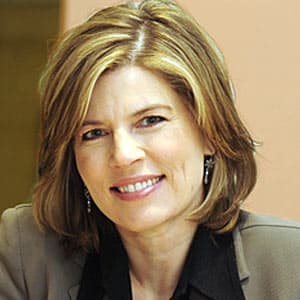Advertisement
Tracing The Path Of The Modern GOP, From Reagan To Trump
Resume
The Wall Street Journal's executive Washington editor Gerald Seib has been a fly on the wall of the Republican Party for the past 40 years. He joins us to unspool the history that led up to President Trump’s election in 2016, and chart the course of the GOP into the future.
Guests
Gerald Seib, executive Washington editor of The Wall Street Journal. Author of the new book, "We Should Have Seen It Coming: From Reagan To Trump — A Front-Row Seat To A Political Revolution." (@GeraldFSeib)
Oren Cass, executive director of American Compass, a conservative think tank. Author of “The Once and Future Worker." (@oren_cass)
Mindy Finn, co-founder of Stand Up Republic. CEO of Citizen Data. 2016 Independent Vice Presidential candidate with Evan McMullin. (@mindyfinn)
Interview Highlights
On Donald Trump’s self-branded “outsider” status
Gerald Seib: “I think it's completely in keeping with the portrayal of Donald Trump that I say, or that I concluded, was most fitting in the book, which is to say he's the ultimate outsider coming in to overtake the conventional conservative Republican Party, and all of Washington. And almost four years in that really hasn't changed very much. He still thinks he's the outsider his people want him to be. His supporters want him to be an outsider. We continue to find that in polling. And that tells you a lot about how he got there in the first place. It was by essentially not buying into any establishment message or to the Republicans establishment, but by challenging it and continuing to do so.”
On the signposts that pointed toward Donald Trump’s rise over the years
Gerald Seib: “If you go back and relive this period, which I covered, you see many signs that this was building. Pat Buchanan was one; Sarah Palin was one; Mike Huckabee was one. Ross Perot was certainly one. The rise of the Tea Party was one. And those seemed at the time that maybe they were marginal developments or that they were aberrations or that they didn't really represent anything long-lasting. But in fact, they were a sign that within the Republican Party and within the nation, there was a kind of a new reality emerging that significant demographic changes had occurred in the Republican Party. Lots of working class, middle class voters who used to be Democrats have moved into the party over time for cultural reasons. They didn't like gay marriage, didn't like transgender rights, were very opposed to abortion, didn't like the East Coast elitist attitude of some Democrats. And they became Republicans and they got to the Republican Party for cultural, attitudinal reasons and just decided that the economic globalization, free trade embrace of the conservative movement, plus a lot of immigration didn't really fit with their view of the world. And Donald Trump understood all of that. And in many ways, he recognized there was an open door there for somebody like him, and he walked through it.”
"The economic globalization, free trade embrace of the conservative movement, plus a lot of immigration didn't really fit with their view of the world. And Donald Trump understood all of that. And in many ways, he recognized there was an open door there for somebody like him, and he walked through it.”
Gerald Seib
On the role that the Cold War’s end played in the GOP’s transformation
Gerald Seib: “One of the other factors that came into play over time, over this four decade arc that we're talking about, was the end of the Cold War. Because in many ways, the Cold War and anticommunism was the glue that held together conservatives and Republicans who may have disagreed on many other things, but they could always agree that there was an existential threat: It was the communist threat from the Soviet Union, and we all have to be together to stand up against that. And when that went away in the ‘90s, I think it slowly dried up, cracked up, and then kind of blew away some of the glue that was holding conservatives together and opened the way for somebody who wasn't so conventional to move in.”
On the disaffection of some of the Republican base under Trump
Mindy Finn: “At its heart, today's Republican Party is the Trump Party. And you're either with him, and if you're not with him, then you don't belong. It is not a party that's focused on governing; it's a party that's focused on fear, and in many cases manufactured fear, in order to gain popular support. We believe that you have to start from, first, core principles and values. And many of those are actually the core principles that were there in the Constitution that have underpinned our nation since its founding. And you have to just start from a place of ideas and policy generation and governing. When I hear in kind of the previous conversation around aspirations to have economic policy that serves more Americans and not just the elites, when I hear some of the rhetoric from the Republican convention, there's really a disconnect from what you hear and aspiration and outcomes. Because this is a party that's a lot of talk and may say these things for thematic purposes, but the outcomes are a far cry from what they aspirationally say they stand for and what they're going to do."
"This is a party that's a lot of talk and may say these things for thematic purposes, but the outcomes are a far cry from what they aspirationally say they stand for and what they're going to do."
Mindy Finn
On the demographic shifts in party affiliation over the past four decades
Gerald Seib: “A lot of people in middle America — and by Middle America I mean geographically in the middle of the country, economically in the middle of the country, and culturally in the middle of the country — kind of felt over time that the Democrats had moved away from them, and that had to do with them with cultural issues. I mentioned earlier, you know, prayer in schools, religious rights, gay marriage, transgender rights, but also an anti-immigrant feeling and, some would say, racist feelings as well. And those people moved into the Republican Party and away from the Democratic Party. But I think the second route is that once they got there, they had a different view of what government’s economic policy ought to be. I think they were people who in many cases were victimized by free trade policies that Republicans had championed, and they felt victimized by a global economy where they were a bit marginalized and they wanted somebody to help them. And the traditional Republican conservative message basically said, well, it’s the free market. Everything will work out. And it wasn't sufficient for them, and it wasn't sufficient for Donald Trump either. And in a way, that's one of the reasons this strange marriage between the Republican Party and Donald Trump came together. It didn't happen at the upper level, at the high level, at the establishment level. It happened at the grassroots level. And it's still going on.”
On the parallels between the 1979 election and 2020
Gerald Seib: “1979, that was the year in which things seemed to be falling apart. You know, you had stagflation, you had an energy crisis, you had gas lines, and then you had the ultimate embarrassment, which was that the Iranian students took hostages at the U.S. embassy in Tehran. And it felt to Americans like the wheels had fallen off, things were out of control. And that opened the way for Ronald Reagan. Fast forward to 2020 and you have a similar set of circumstances: You have a pandemic; you have an economic crisis that results; you have racial unrest; you have violence in the streets in some places; and you have a feeling, I think some Americans do, that things are out of control. We asked the question earlier this year in our polling with The Wall Street Journal-NBC News poll: Do you think things are under control or out of control? And 80 percent of people said, I think things are out of control. That would look and feel like what happened in 1979, and it opened the door for the incumbent president — then Jimmy Carter, now Donald Trump — to be toppled. What's different here is that Donald Trump has managed to maintain the appearance that he's the outsider and that he's not responsible for these adverse trends. And when they pile and one on top of the other, they usually hurt the incumbent. But we'll see. As I said earlier, the ability of Donald Trump over the last week of the Republican convention to portray himself as still the outsider looking in and Joe Biden as essentially the status quo establishment candidate is remarkable for an incumbent president. But it just might work.”
"The ability of Donald Trump over the last week of the Republican convention to portray himself as still the outsider looking in and Joe Biden as essentially the status quo establishment candidate is remarkable for an incumbent president. But it just might work.”
Gerald Seib
From The Reading List
Excerpt from "We Should Have Seen It Coming" by Gerald Seib.
Copyright © 2020. Reprinted with permission from the author.
The Wall Street Journal: "How Trump Has Changed The Republicans" — "For almost four decades, the conservative movement was defined by one man, Ronald Reagan, and his movement, the Reagan Revolution. Reagan was an unlikely revolutionary figure, a modestly successful actor with a self-effacing style and no intellectual pretensions. Yet he personally made the Republican Party into a conservative party, and his legacy inspired the movement’s leaders, animated its policy debates and stirred its voters’ emotions long after he left the scene."
The New York Times: "Where Do Republicans Go From Here?" — "Jonathan V. Last thinks President Trump is here forever. Last, the editor of The Bulwark, a conservative site that’s been hostile to Trump, argues that if Trump loses in November, he’ll claim he was cheated out of the election. He’ll force other Republicans to back up his claim. He’ll get a TV show, hold rallies, be coy about running again in 2024."
The Washington Post: "If these leaders define the future of the Republican Party, it doesn’t deserve to have a future" — "With President Trump trailing in the polls, there is palpable hope in some quarters that the Republican Party will get back to “normal” before long. That means a Reaganesque agenda of tax cuts, free trade, deregulation, muscular internationalism, social conservatism and a welcoming attitude toward immigrants."
The Washington Post: "Republicans are putting on two conventions this week. One of them will be sane." — "The Republican Party revealed its descent into a cult of personality by declaring on Sunday that it would have no party platform at its convention this week, only a pledge of complete loyalty to President Trump. The party proclaimed in a resolution that 'The [Republican National Committee] enthusiastically supports President Trump and continues to reject the policy positions of the Obama-Biden Administration, as well as those espoused by the Democratic National Committee today … [and that] the Republican Party has and will continue to enthusiastically support the President’s America-first agenda.' Any platform would be ruled 'out of order,' according to the resolution. It is quite a confession of intellectual vacuity."
This program aired on August 28, 2020.

